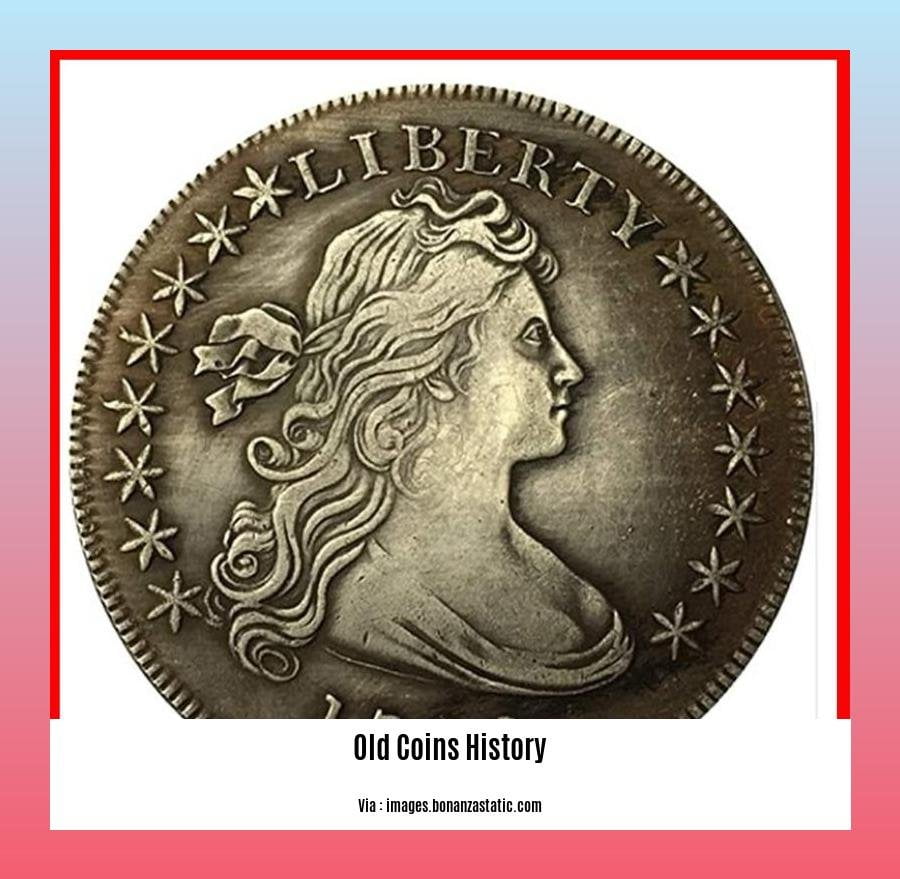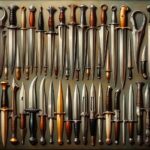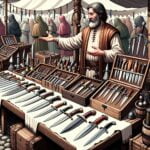Are you fascinated by the history and beauty of old coins? Join us on [A Journey Through Time: Delving into the History of Old Coins] as we explore the captivating world of numismatics. From the earliest forms of currency to the intricate designs of medieval coins and the innovative designs of the industrial era, you’ll discover the stories, secrets, and significance of these treasured artifacts.
Key Takeaways:
Coins have a rich history spanning thousands of years, serving as a medium of exchange in various civilizations.
The Lydian Lion, minted around 610-600 BCE, is recognized as the oldest known coin.
Ancient coins, including the Ionian Hemiobols, Ying Yuan, Karshapana, Aegina Sea Turtle, Persian Daric, and the Hallaton Silver Coin, hold significant historical value.
The invention of coins is attributed to wealthy and influential kings, such as Croesus of ancient Lydia, during the 5th century BCE.
Old Coins History: Unveiling the Enigmatic Past
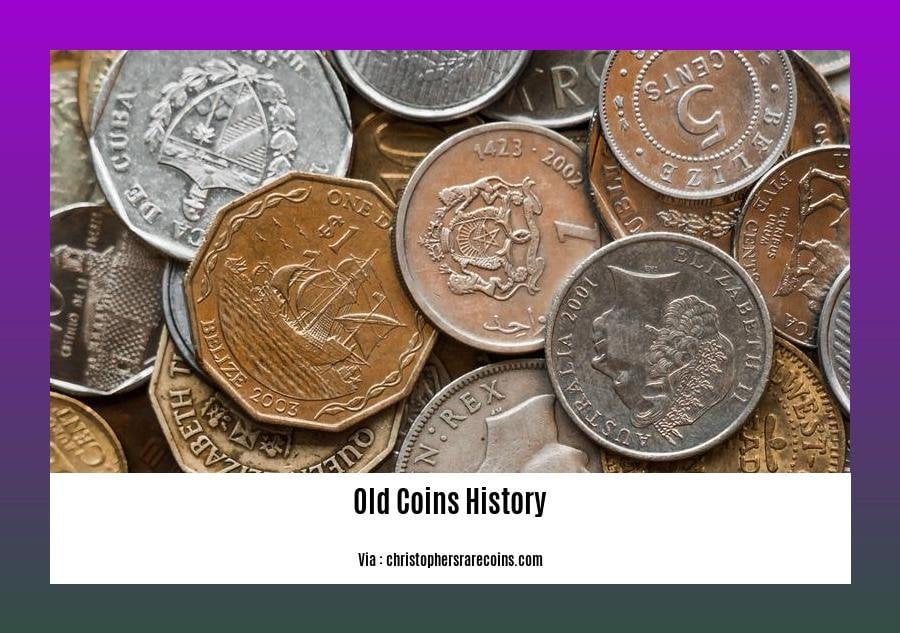
Numismatics, the study of old coins, is a fascinating field that intertwines history, art, and economics. These ancient relics offer a tangible connection to civilizations long gone, providing insights into their cultures, economies, and artistic expressions.
The Dawn of Coinage: From Barter to Currency
The origins of coins can be traced back to the 7th century BCE in ancient Lydia, where they emerged as a practical solution to the limitations of barter systems. These early coins, known as Lydian Lions, revolutionized trade by introducing a standardized medium of exchange.
A Tapestry of Ancient Coinage: Diverse Forms and Functions
Throughout history, different civilizations developed their own unique coinage systems. Greek city-states, for instance, minted coins featuring intricate designs and mythological figures, while ancient China used coins with square holes in the center. Some coins, like the Roman Denarius, served as currency, while others, such as the Athenian Tetradrachm, functioned as both currency and works of art.
The Enduring Legacy of Old Coins: A Connection to the Past
Old coins continue to captivate collectors and historians alike. Their numismatic value often extends beyond monetary worth, as they embody historical significance, cultural heritage, and aesthetic appeal. Preserved in museums and private collections, these relics provide a tangible link to the past, offering glimpses into the lives and societies that created them.
Modern Applications: Beyond Currency
In the modern era, old coins find new life in various applications. They are used in jewelry, decorative arts, and as historical artifacts in museums and educational institutions. The study of old coins, known as numismatics, remains a popular hobby and academic pursuit, attracting enthusiasts from all walks of life.
Table: Notable Ancient Coins and Their Civilizations
| Coin | Civilization | Period |
|---|---|---|
| Lydian Lion | Lydia | 7th century BCE |
| Ionian Hemiobols | Ionia | 6th century BCE |
| Ying Yuan | China | 10th century BCE |
| Karshapana | India | 6th century BCE |
| Aegina Sea Turtle | Aegina | 6th century BCE |
| Persian Daric | Persia | 5th century BCE |
| Hallaton Silver Coin | Celtic Britain | 1st century BCE |
- Explore a comprehensive collection of project topics for history students that delve into various historical eras and subjects, offering a diverse range of research opportunities.
- Dive into the short history of England by Simon Jenkins, a captivating narrative that unveils the rich tapestry of English history from its ancient origins to the modern era.
- Embark on a journey through time with a short history of Europe, tracing the evolution of European civilization from the ancient Greeks and Romans to the present day, shaping the world we live in today.
The History of the Industrial Era Coins
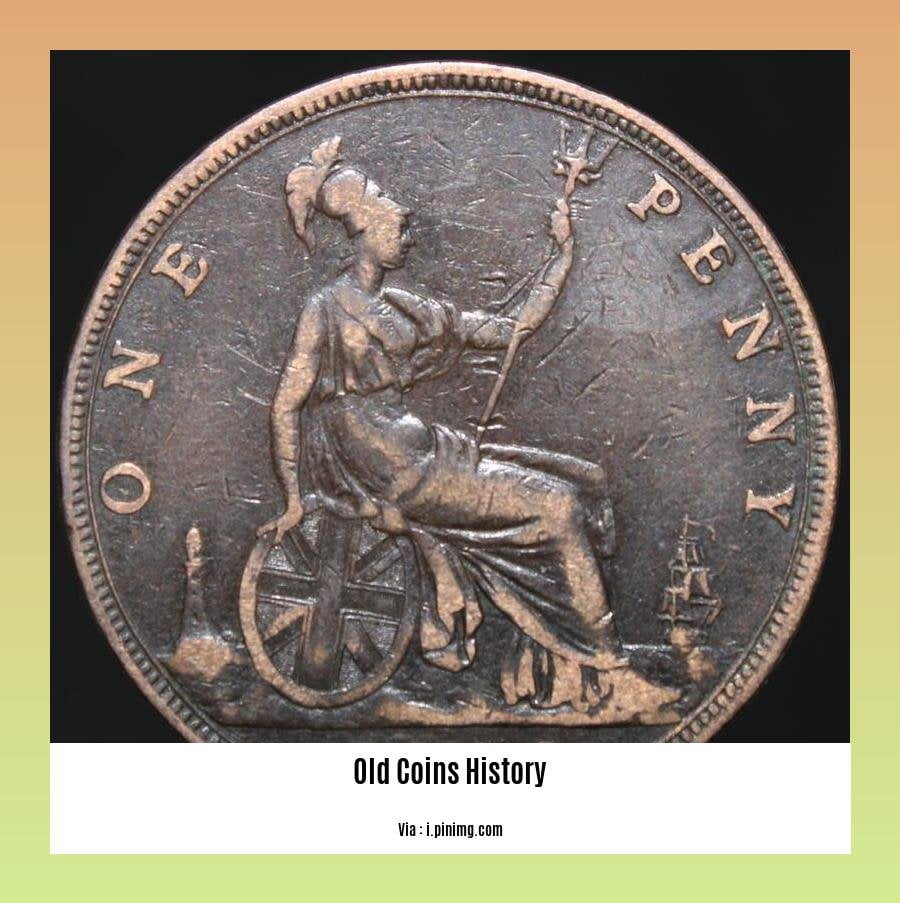
During the Industrial Era, the demand for coins surged as the economy and trade flourished. This era witnessed significant innovations in coin production, leading to the widespread use of coins in commercial transactions.
The Rise of Mechanization
The Industrial Revolution brought about mechanization, which transformed coin production. Mechanized presses replaced manual hammering, increasing efficiency and allowing for mass production of coins. This led to a drastic increase in the number of coins in circulation, facilitating the growth of commerce.
Standardization and Uniformity
Prior to the Industrial Era, coins often varied in size, weight, and design, making it difficult to determine their value and authenticity. With the advent of mechanization, coins became more standardized, with consistent size, weight, and design. This standardization simplified transactions and enhanced the reliability of coins as a medium of exchange.
New Minting Techniques
The Industrial Era saw the introduction of new minting techniques, such as the screw press, which produced coins with sharper and more intricate designs. These techniques allowed for the inclusion of more detailed imagery and inscriptions, enhancing the aesthetic appeal of coins and making them more difficult to counterfeit.
Key Takeaways:
- The Industrial Era witnessed a surge in demand for coins due to economic growth and increased trade.
- Mechanization revolutionized coin production, enabling mass production and enhancing efficiency.
- Standardization and uniformity in coin size, weight, and design facilitated transactions and increased the reliability of coins.
- New minting techniques, including the screw press, produced coins with intricate designs and improved security features.
Sources:
– The History of Coinage
– The Industrial Revolution and the Development of Coinage
Old Coins History In The World
Many don’t realize how long coins have been around in our lives. They hold stories from civilizations past, giving us insight into their days. But how far back does this go? Join me as I delve into the captivating history of old coins, exploring their influence on civilizations across the globe.
The Dawn of Coinage
The story starts in the 7th Century BC in Lydia, where the Lydians crafted the world’s first coins. Necessity drove this innovation, as Lydia’s growing trade demanded a reliable medium of exchange.
These early coins, known as Lion coins, were crafted from electrum and bore striking lion and bull motifs. They opened the door to a world of commerce undreamed of before. Coins fostered trade, allowing merchants to travel far from home with minimal risk of fraud or dispute.
Coins Across Continents
The Lydian Lion coins sparked a wave of innovation that echoed across the ancient world. In Greece, beautiful coins adorned with deities and heroes emerged, while in China, intricate bronze coins with a hole in the center began circulating.
Coinage spread like wildfire, becoming a standard across cultures. From the Persian Empire to the Roman Republic, coins facilitated commerce, recorded history, and expressed cultural identity.
The Rise of Standardization
As coins proliferated, the need for standardization became apparent. In the Roman Empire, standardized coinage played a pivotal role in unifying the vast and diverse territories under their control. These standardized coins, usually made of gold, silver, or bronze, eased trade, administration, and taxation.
Mechanization Revolutionizes Coinage
The Industrial Revolution brought mechanization to coin production, forever transforming the landscape. Mass production became possible, replacing the sheer toil of hand-hammered coins with a mechanical symphony.
The screw press, a game-changer in this era, produced coins with intricate designs and enhanced security features. These innovations accelerated the transition to mass-produced coins.
Key Takeaways:
- Coinage emerged in Lydia in the 7th century BCE, meeting the demand for reliable currency in a flourishing trade environment.
- Ancient Greek and Chinese civilizations developed their unique coin designs, reflecting cultural identity and economic evolution.
- The Roman Empire standardized coinage, unifying territories under a common currency system.
- The Industrial Revolution mechanized coin production, facilitating mass production and the development of secure, intricate designs.
References:
[1] Coinage – A History of Money (investopedia.com)
[2] The History of Coins (royalmintmuseum.org.uk)
FAQ
Q1: What materials were ancient coins made of?
A1: Ancient coins were initially made of electrum, a naturally occurring alloy of gold and silver. Later on, they were minted using various metals such as gold, silver, bronze, and copper.
Q2: What is the significance of the Lydian Lion coins?
A2: The Lydian Lion coins, introduced around 610-600 BCE, are widely recognized as the oldest known coins in the world. They were minted in Lydia, an ancient kingdom in western Anatolia, and played a crucial role in the development of coinage as a medium of exchange.
Q3: How did coins evolve from religious objects to commercial currency?
A3: Initially, ancient coins were primarily used for religious purposes and not for commerce. However, as trade and commerce expanded, coins gradually transitioned into a form of currency, facilitating the exchange of goods and services.
Q4: What were the key factors that contributed to the widespread adoption of coinage?
A4: The widespread adoption of coinage can be attributed to several factors such as the growth of trade, the need for a standardized medium of exchange, and the influence of powerful empires like the Lydians, Greeks, and Romans.
Q5: What are some of the most famous and valuable ancient coins?
A5: Some of the most famous and valuable ancient coins include the Lydian Lion, the Athenian Owl, the Roman Aureus, the Islamic Dinar, and the Chinese Ban Liang. These coins are highly sought after by collectors and numismatists due to their historical significance, rarity, and artistic value.
- Star Ring Trends: Etsy vs Amazon - March 28, 2025
- Boost Pollinator Habitats: Baby Blue Eyes Sustainable Farming Guide - March 28, 2025
- Protect Big Black Bears: Effective Conservation Strategies - March 28, 2025
